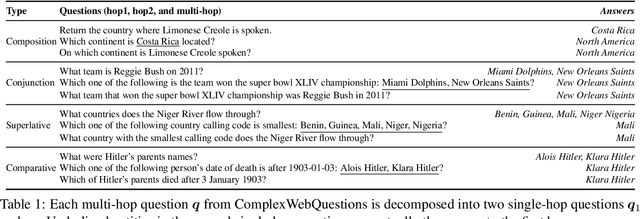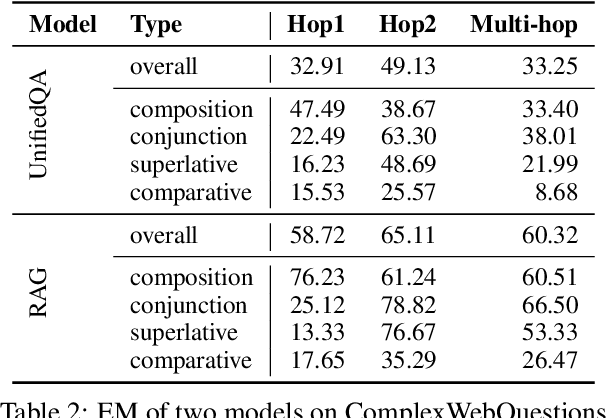Haibo Ding
Black-Box Visual Prompt Engineering for Mitigating Object Hallucination in Large Vision Language Models
Apr 30, 2025Abstract:Large Vision Language Models (LVLMs) often suffer from object hallucination, which undermines their reliability. Surprisingly, we find that simple object-based visual prompting -- overlaying visual cues (e.g., bounding box, circle) on images -- can significantly mitigate such hallucination; however, different visual prompts (VPs) vary in effectiveness. To address this, we propose Black-Box Visual Prompt Engineering (BBVPE), a framework to identify optimal VPs that enhance LVLM responses without needing access to model internals. Our approach employs a pool of candidate VPs and trains a router model to dynamically select the most effective VP for a given input image. This black-box approach is model-agnostic, making it applicable to both open-source and proprietary LVLMs. Evaluations on benchmarks such as POPE and CHAIR demonstrate that BBVPE effectively reduces object hallucination.
CSPLADE: Learned Sparse Retrieval with Causal Language Models
Apr 15, 2025Abstract:In recent years, dense retrieval has been the focus of information retrieval (IR) research. While effective, dense retrieval produces uninterpretable dense vectors, and suffers from the drawback of large index size. Learned sparse retrieval (LSR) has emerged as promising alternative, achieving competitive retrieval performance while also being able to leverage the classical inverted index data structure for efficient retrieval. However, limited works have explored scaling LSR beyond BERT scale. In this work, we identify two challenges in training large language models (LLM) for LSR: (1) training instability during the early stage of contrastive training; (2) suboptimal performance due to pre-trained LLM's unidirectional attention. To address these challenges, we propose two corresponding techniques: (1) a lightweight adaptation training phase to eliminate training instability; (2) two model variants to enable bidirectional information. With these techniques, we are able to train LSR models with 8B scale LLM, and achieve competitive retrieval performance with reduced index size. Furthermore, we are among the first to analyze the performance-efficiency tradeoff of LLM-based LSR model through the lens of model quantization. Our findings provide insights into adapting LLMs for efficient retrieval modeling.
A Systematic Survey of Automatic Prompt Optimization Techniques
Feb 24, 2025Abstract:Since the advent of large language models (LLMs), prompt engineering has been a crucial step for eliciting desired responses for various Natural Language Processing (NLP) tasks. However, prompt engineering remains an impediment for end users due to rapid advances in models, tasks, and associated best practices. To mitigate this, Automatic Prompt Optimization (APO) techniques have recently emerged that use various automated techniques to help improve the performance of LLMs on various tasks. In this paper, we present a comprehensive survey summarizing the current progress and remaining challenges in this field. We provide a formal definition of APO, a 5-part unifying framework, and then proceed to rigorously categorize all relevant works based on their salient features therein. We hope to spur further research guided by our framework.
Retrieval as Attention: End-to-end Learning of Retrieval and Reading within a Single Transformer
Dec 05, 2022



Abstract:Systems for knowledge-intensive tasks such as open-domain question answering (QA) usually consist of two stages: efficient retrieval of relevant documents from a large corpus and detailed reading of the selected documents to generate answers. Retrievers and readers are usually modeled separately, which necessitates a cumbersome implementation and is hard to train and adapt in an end-to-end fashion. In this paper, we revisit this design and eschew the separate architecture and training in favor of a single Transformer that performs Retrieval as Attention (ReAtt), and end-to-end training solely based on supervision from the end QA task. We demonstrate for the first time that a single model trained end-to-end can achieve both competitive retrieval and QA performance, matching or slightly outperforming state-of-the-art separately trained retrievers and readers. Moreover, end-to-end adaptation significantly boosts its performance on out-of-domain datasets in both supervised and unsupervised settings, making our model a simple and adaptable solution for knowledge-intensive tasks. Code and models are available at https://github.com/jzbjyb/ReAtt.
Understanding and Improving Zero-shot Multi-hop Reasoning in Generative Question Answering
Oct 09, 2022



Abstract:Generative question answering (QA) models generate answers to questions either solely based on the parameters of the model (the closed-book setting) or additionally retrieving relevant evidence (the open-book setting). Generative QA models can answer some relatively complex questions, but the mechanism through which they do so is still poorly understood. We perform several studies aimed at better understanding the multi-hop reasoning capabilities of generative QA models. First, we decompose multi-hop questions into multiple corresponding single-hop questions, and find marked inconsistency in QA models' answers on these pairs of ostensibly identical question chains. Second, we find that models lack zero-shot multi-hop reasoning ability: when trained only on single-hop questions, models generalize poorly to multi-hop questions. Finally, we demonstrate that it is possible to improve models' zero-shot multi-hop reasoning capacity through two methods that approximate real multi-hop natural language (NL) questions by training on either concatenation of single-hop questions or logical forms (SPARQL). In sum, these results demonstrate that multi-hop reasoning does not emerge naturally in generative QA models, but can be encouraged by advances in training or modeling techniques.
Weakly Supervised Named Entity Tagging with Learnable Logical Rules
Jul 05, 2021



Abstract:We study the problem of building entity tagging systems by using a few rules as weak supervision. Previous methods mostly focus on disambiguation entity types based on contexts and expert-provided rules, while assuming entity spans are given. In this work, we propose a novel method TALLOR that bootstraps high-quality logical rules to train a neural tagger in a fully automated manner. Specifically, we introduce compound rules that are composed from simple rules to increase the precision of boundary detection and generate more diverse pseudo labels. We further design a dynamic label selection strategy to ensure pseudo label quality and therefore avoid overfitting the neural tagger. Experiments on three datasets demonstrate that our method outperforms other weakly supervised methods and even rivals a state-of-the-art distantly supervised tagger with a lexicon of over 2,000 terms when starting from only 20 simple rules. Our method can serve as a tool for rapidly building taggers in emerging domains and tasks. Case studies show that learned rules can potentially explain the predicted entities.
GLaRA: Graph-based Labeling Rule Augmentation for Weakly Supervised Named Entity Recognition
Apr 13, 2021



Abstract:Instead of using expensive manual annotations, researchers have proposed to train named entity recognition (NER) systems using heuristic labeling rules. However, devising labeling rules is challenging because it often requires a considerable amount of manual effort and domain expertise. To alleviate this problem, we propose \textsc{GLaRA}, a graph-based labeling rule augmentation framework, to learn new labeling rules from unlabeled data. We first create a graph with nodes representing candidate rules extracted from unlabeled data. Then, we design a new graph neural network to augment labeling rules by exploring the semantic relations between rules. We finally apply the augmented rules on unlabeled data to generate weak labels and train a NER model using the weakly labeled data. We evaluate our method on three NER datasets and find that we can achieve an average improvement of +20\% F1 score over the best baseline when given a small set of seed rules.
How Can We Know When Language Models Know?
Dec 02, 2020Abstract:Recent works have shown that language models (LM) capture different types of knowledge regarding facts or common sense. However, because no model is perfect, they still fail to provide appropriate answers in many cases. In this paper, we ask the question "how can we know when language models know, with confidence, the answer to a particular query?" We examine this question from the point of view of calibration, the property of a probabilistic model's predicted probabilities actually being well correlated with the probability of correctness. We first examine a state-of-the-art generative QA model, T5, and examine whether its probabilities are well calibrated, finding the answer is a relatively emphatic no. We then examine methods to calibrate such models to make their confidence scores correlate better with the likelihood of correctness through fine-tuning, post-hoc probability modification, or adjustment of the predicted outputs or inputs. Experiments on a diverse range of datasets demonstrate the effectiveness of our methods. We also perform analysis to study the strengths and limitations of these methods, shedding light on further improvements that may be made in methods for calibrating LMs.
X-FACTR: Multilingual Factual Knowledge Retrieval from Pretrained Language Models
Oct 27, 2020



Abstract:Language models (LMs) have proven surprisingly successful at capturing factual knowledge by completing cloze-style fill-in-the-blank questions such as "Punta Cana is located in _." However, while knowledge is both written and queried in many languages, studies on LMs' factual representation ability have almost invariably been performed on English. To assess factual knowledge retrieval in LMs in different languages, we create a multilingual benchmark of cloze-style probes for 23 typologically diverse languages. To properly handle language variations, we expand probing methods from single- to multi-word entities, and develop several decoding algorithms to generate multi-token predictions. Extensive experimental results provide insights about how well (or poorly) current state-of-the-art LMs perform at this task in languages with more or fewer available resources. We further propose a code-switching-based method to improve the ability of multilingual LMs to access knowledge, and verify its effectiveness on several benchmark languages. Benchmark data and code have been released at https://x-factr.github.io.
 Add to Chrome
Add to Chrome Add to Firefox
Add to Firefox Add to Edge
Add to Edge